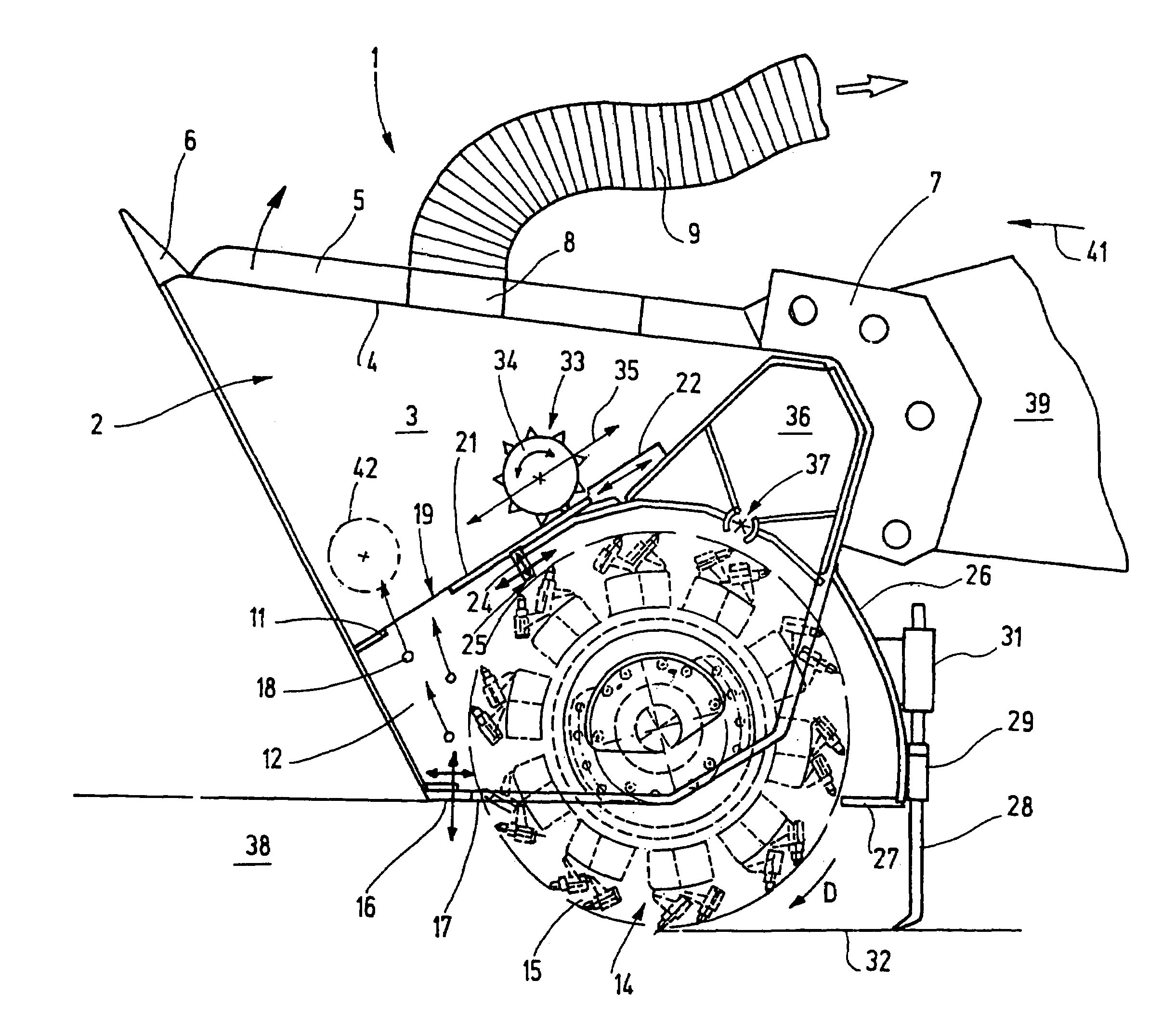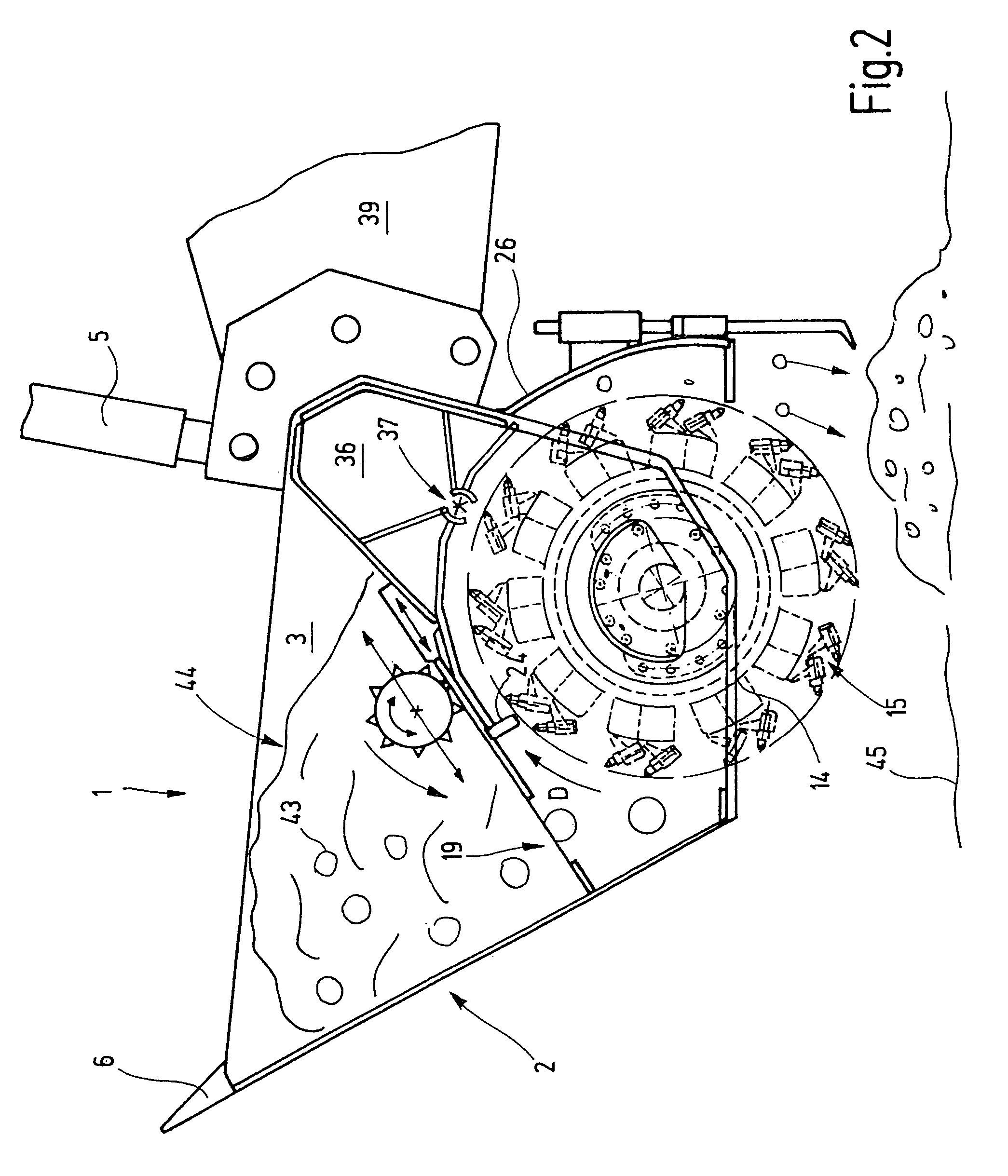Milling device for floors, rock, excavated material or other material
a technology of excavated material and milling device, which is applied in the direction of cutting machines, grain treatment, ways, etc., can solve the problem of not being able to easily break through the solid top layer
- Summary
- Abstract
- Description
- Claims
- Application Information
AI Technical Summary
Benefits of technology
Problems solved by technology
Method used
Image
Examples
Embodiment Construction
[0031]In FIG. 1, a milling apparatus 1 is shown, which can for instance replace an excavator bucket or the bucket of a wheel loader, or can be guided by some other kind of device. The milling apparatus 1 has a bucket 2, which encloses a receiving chamber 3. At the top of the bucket 2, the receiving chamber has a receiving opening 4, which is closed by a lid 5. Teeth 6 can be embodied on the edge of the receiving opening 4. The lid 5 is pivotably supported on a holder 7. It can be provided with a suction opening 8, to which an suction extractor is connected via a suction line 9. The suction extractor can be supported by the device that carries the milling apparatus 1, or it can be set up separately.
[0032]In the bucket 2, a milling chamber 12 in which a milling rotor 14 is rotatably supported is partitioned off via a partition 11. The milling rotor is equipped with tools 15, such as hard metal chisels, which serve to comminute the material and mix it and are inclined in the direction ...
PUM
 Login to View More
Login to View More Abstract
Description
Claims
Application Information
 Login to View More
Login to View More - R&D
- Intellectual Property
- Life Sciences
- Materials
- Tech Scout
- Unparalleled Data Quality
- Higher Quality Content
- 60% Fewer Hallucinations
Browse by: Latest US Patents, China's latest patents, Technical Efficacy Thesaurus, Application Domain, Technology Topic, Popular Technical Reports.
© 2025 PatSnap. All rights reserved.Legal|Privacy policy|Modern Slavery Act Transparency Statement|Sitemap|About US| Contact US: help@patsnap.com



